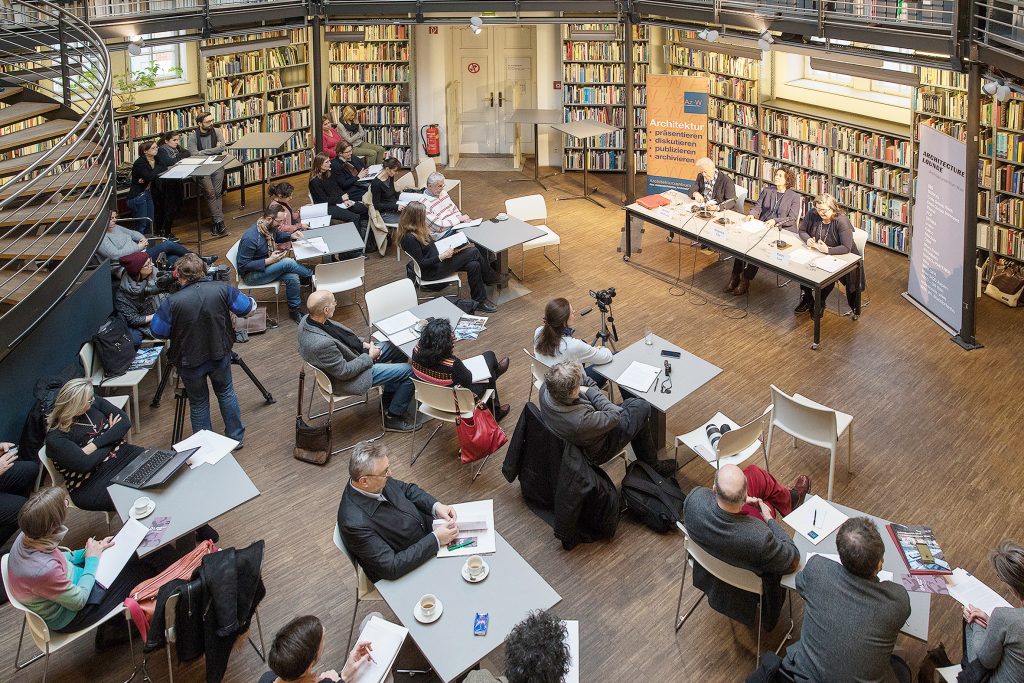
Architekturzentrum Wien: Annual Press Conference
© Photograph: eSeL.at
The climate crisis, social conflicts and sustainable economics: The central challenges for our future are closely tied to architecture and planning, so the building sector is responsible for using a large part of the world's resources. The affordability of housing, integrative mobility and energy concepts, a low-impact land policy, material cycles, spaces for new forms of production in the modern digital age, architecture that creates identity and promotes health, platforms for encounter and participation — a prominent location is required for engaging with these topics on a trans-disciplinary level.
This is why the Architekturzentrum Wien is calling for a new type of architecture museum, a hybrid museum for architecture and the future that combines different know-how from research, culture and civil society, so counteracting the fragmentation of society. Such an architecture museum is knowledgeable about the past and shapes the future, it combines research and everyday life and becomes an experimental testing ground itself. Why can’t a museum produce energy or run greenhouses? How can a museum be a public living room and a place of learning? How can an architecture museum become a laboratory for climate justice? The Architekturzentrum Wien wants to keep working on this vision with partners from politics and civil society. The goal is a museum that changes the future!
With its 2020 Programme the Architekturzentrum Wien affirms a resolute societal perspective and again poses the question of what architecture can contribute to repairing the future. This year there is a particular focus on housing as a human right, and conserving that endangered resource land.
The exhibition season begins in March 2020 with an exceptional international architect. In 2018, Balkrishna Doshi was the first Indian architect to be awarded the prestigious Pritzker Prize. The 92-year-old architect, urbanist and teacher is among the key proponents of “a different modernism”. His visionary works in the affordable housing sector, which include projects for factory workers and slum-occupants, as well as his strong commitment to education are central to his approach. The exhibition ‘Balkrishna Doshi, Architecture for the People’ compiles a wealth of original material from six decades, including Doshi’s famous drawings inspired by Indian miniatures. Recent photographs and film footage show the continuing life of his architecture.
In Summer 2020 the very popular ‘Europe’s Best Buildings’ comes to the Az W again. The two-yearly Mies van der Rohe Award is a seismograph for events in the European architecture sector. The current prize goes to a pioneering housing development project: an inspiring transformation of three apartment blocks from the 1960s in Bordeaux, by Lacaton & Vassal in collaboration with Frédéric Druot and Christophe Hutin. Alongside the housing issue, the best 40 European projects selected engage with the subjects of public space, education and the treatment of the original substance. This includes three projects from Austria: the state school in Seestadt aspern by Fasch&Fuchs and a housing development by Vlay Streeruwitz in Vienna-Floridsdorf as well as the Haus der Musik by Erich Strolz and Dietrich Untertrifaller in Innsbruck.
In September 2020, the area of Vienna to the north of the Danube is the subject of the sixth SammlungsLab. Since their inclusion within the city limits, the two Districts of Floridsdorf and Donaustadt have served as a testing field for the development of modern housing projects. Much of what later went into production in institutional housing developments was originally tested in the Transdanube Region, where land was available at low cost and in sufficient quantity. Today two out of ten of the inhabitants of Vienna live on the ‘other’ side of the Danube, this is where the city is growing most rapidly. The exhibition ‘Transdanubia: The Northern Periphery as the Testing Ground for Vienna’ shows prototypical housing projects and debates over nine decades.
Starting in November 2020, the big Autumn exhibition ‘Land for Us All’ engages with one of the pressing issues of our time. Land is our most valuable resource. The surface of the Earth is limited. A careless or purely capital-driven treatment of this resource has changed the design and function of our towns and villages over recent decades. The progressive sealing over of surfaces is contributing to the climate crisis, increasing the cost of housing, making it more difficult to have sensible traffic and transport policies, and threatening food security. With the exhibition ‘Land for Us All’, the Architekturzentrum Wien sheds light on the tangle of the relevant competencies and responsibilities, such as spatial planning regulations, Austria’s system of financial equalization between federal states, urban development, zoning, interest rate policy and the distribution of wealth. At the same time, the effectiveness of alternative local and international models is being tested too. A deeper understanding of the land policy context is essential for the transition to a climate-friendly and socially just development of our society. The exhibition prepares the ground for just that.
The sixth edition of Collection with a View is dedicated to the 150th birthday of Adolf Loos. To mark the occasion appropriately the Az W is organising an architectural excursion to Loos’ houses and apartments in Prague and Pilsen. In fact, the architectural excursion format is being expanded. In 2020 tours are also being offered to India and Vorarlberg, among other destinations.
In addition, once again in 2020 and together with the exhibitions there is a diverse programme of events, educational activities and excursions throughout the year that really shows what architecture can do!
